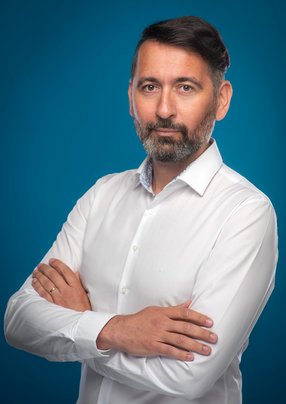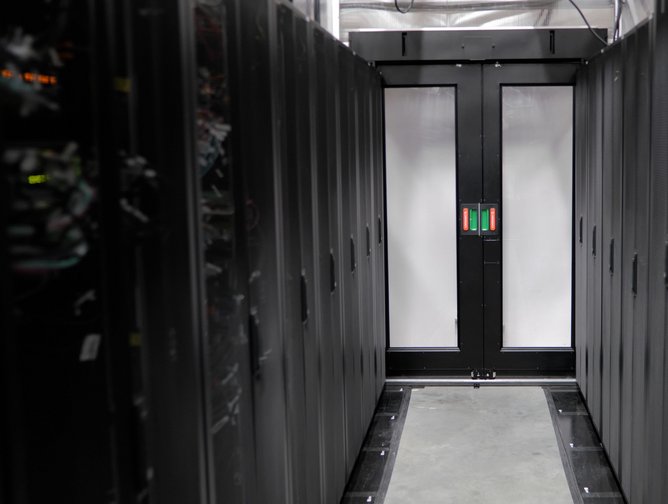
Cosmin Georgescu
CEO of ClusterPower

“We have just become an alternative to the entire FLAP area,” says Vladimir Ester, CTO of ClusterPower, as they position themselves to become one of the most groundbreaking DC centres in Central and Eastern Europe.
The FLAP areas are Frankfurt, London, Amsterdam and Paris — the four cities considered to be the primary markets for all new data centre deployments.
Located in Romania, ClusterPower’s five hyperscale Data Centres (DCs) are of a magnitude and scalability that promises to see them become the leading provider for the entire region, while enabling them to tap into international markets. All five data centres are scheduled for completion by 2025, by which time they will be housed in a 25,000 SQM campus, sustainably producing a total capacity of 200MW.
So this is hyperscale technology — but not as you know it.
Ester comes from a strong technological background and has acted as an infrastructure engineer, as well as a solutions architect, for data centre and internet service provider deployments throughout most of his career. He has also been a CCIE — Cisco Certified Internetwork Expert — for almost 10 years, with this expertise laying the technical foundations for project ClusterPower. “I think that this skill set has really prepared me to both design and implement large-scale infrastructure projects,” he says. “So, in the last couple of years, I've moved away from engineering towards management and entrepreneurship, joining Cosmin and the rest of the team, and I’m now managing all of the infrastructure aspects related to our campus.”
“We are very experienced in our fields,” says Cosmin Georgescu, CEO of ClusterPower, “and I have been closely involved in both energy and technology projects for over 20 years now, so it was a natural move to have our own assets and to build our own Data Centre and technology campus.”
Georgescu has fundamental knowledge of Cisco training and certifications, as well as of Project Management — experience that led to him to setting up the first data centre in Romania for Microsoft, Bosch, and Amazon — and he’s worked on several large national projects and infrastructures, including establishing a nuclear power plant, as well as Romania's first wind farm and its first photovoltaic plant.
A Green Energy Data Centre Powerhouse
One of the main cross-industry concerns with hyperscale DCs is potential energy wastage. But, through strategic partnerships, ClusterPower has come up with an innovative solution to build a powerful data park that is not only operationally effective, but also highly sustainable and extremely energy efficient.
“We are focusing on green energy, power and efficiency,” says Georgescu, and that focus is already yielding major returns. ClusterPower has a PUE (Power Usage Effectiveness) of just 1.1, which is considered very low across the industry. “We produce our own power and cooling at the same time and, to come up with such an innovative solution, we worked with our partners, Rolls-Royce MTU (hydrogen-engine solutions), which makes us not only extremely efficient but also allows us to function independently, while greatly reducing business interruption risks.”
Core Principles of Security and Resilience
Security and resilience are core principles of ClusterPower, in addition to the design and digital architecture being built entirely around them. ClusterPower’s campus is protected according to military standards and continuously monitored by over 200 high-definition cameras. All access is controlled by specific security procedures, with individual security levels for each rack, row and room — including biometric access technology.
ClusterPower’s security-first model can be divided into two areas: the first is related to specialised cyber security equipment, such as next-generation firewalls and its own distributed denial of service protection (DDOS), scrubbing centre and web applications; the second is related to systems’ resilience, which provides a powerful infrastructure that will remain operational even during an attack or disaster.
Read the full story HERE.


Featured Interviews
“Our ESG and DE&I programs are pivotal to ensuring that we not only strive to deliver excellence in data centre development and operations, but we also provide a welcoming and thriving work environment for our people along with developing strong connections with the communities in which we operate.”






